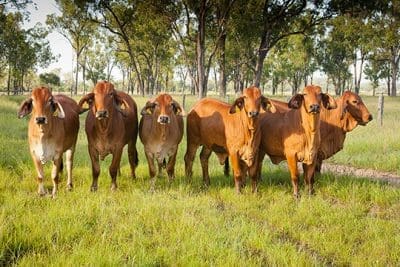EVERY several years or so “cow catcher” and “sheep catcher” exercises have been held in Australia to simulate Foot and Mouth Disease outbreaks, enabling government agencies and industry groups to test the effectiveness of livestock traceability systems in the event of major disease incursion.
What did they show?
 The last major exercise for cattle – Cow Catcher III – was held in 2018, and the last one for sheep – Sheep Catcher II – was held in 2016.
The last major exercise for cattle – Cow Catcher III – was held in 2018, and the last one for sheep – Sheep Catcher II – was held in 2016.
Definitive results for the Cow Catcher III program have not been released publicly outside of key industry stakeholders to Beef Central’s knowledge, while the Sheep Catcher II results were outlined in an Animal Health Australia document which can be viewed here.
The exercises involved agricultural agencies in each State and Territory, where staff were tasked with tracing livestock from a variety of farms, feedlots, saleyards, abattoirs and pre-export quarantine facilities back to properties they had spent time on during their lifetime, using movement information available through the National Livestock Identification System database.
The aim of the traceability exercises was to meet the requirements of the National Traceability Performance Standards, which require primarily that:
– within 24 hours of a relevant State Chief Veterinary Officer being notified of a disease incursion that requires tracing, that it must be possible to determine the location(s) where a specified animal was resident during the previous 30 days;
– Additionally for cattle, it must be possible for the relevant CVO to establish the location where a specified animal has been resident during its life within 48 hours of a notifiable disease incursion.
Cowcatcher III
Three CowCatcher exercises have been conducted since 2004, with the last in 2018.
 SAFEMEAT Partners chair Allan Bloxsom said each showed improvement on the last, with the CowCatcher III exercise in 2018 achieving 98 percent efficiency on the tracing of cattle within 24 hours of notification and 91 percent on the lifetime traceability within 48 hours.
SAFEMEAT Partners chair Allan Bloxsom said each showed improvement on the last, with the CowCatcher III exercise in 2018 achieving 98 percent efficiency on the tracing of cattle within 24 hours of notification and 91 percent on the lifetime traceability within 48 hours.
“CowCatcher showed the database was operating at a high level of efficiency,” Mr Bloxsom said.
Mr Bloxsom said he would struggle to think of any other country or equivalent system able to produce a similar traceability result. While 100pc was the ideal, it was unlikely that any system could achieve a 100pc result.
“98 percent is extremely good and that represents marked improvements over time, going back to 2004 when the original system became mandatory most States. “
Sheep Catcher II
Sheep are also susceptible to Food and Mouth Disease, but outside Victoria where electronic individual identification is now compulsory, the industry relies on a visual ear tag and a paper-based traceability system.
The last SheepCatcher II exercise was conducted before electronic ID was introduced in Victoria, and indicated that the traceability standards were much less effective than the cattle sector.
Results with the paper-based system fell well short of meeting the benchmarks for performance of traceability system as required by the Agricultural Senior Officials Committee (AgSOC), with traceability percentages as low as 50pc where traceability outcomes of 95pc were required, as documented in the summary report.
Mr Bloxsom said he understands the Victorian Government has recently run a similar exercise with the electronic ID sheep system in Victoria which produced a similar performance standard with to the performance of the cattle system in CowCatcher III.
Asked if the arrival of FMD in Indonesia was likely to trigger a new round of traceability exercises, Mr Bloxsom said that given the importance of traceability in managing a livestock disease incursion, it would not be surprising to see additional traceability exercises contemplated.
Could FMD in Indonesia now expedite mandatory national electronic ID for sheep? See seperate story today

HAVE YOUR SAY